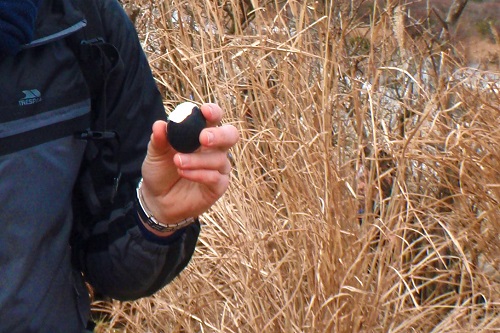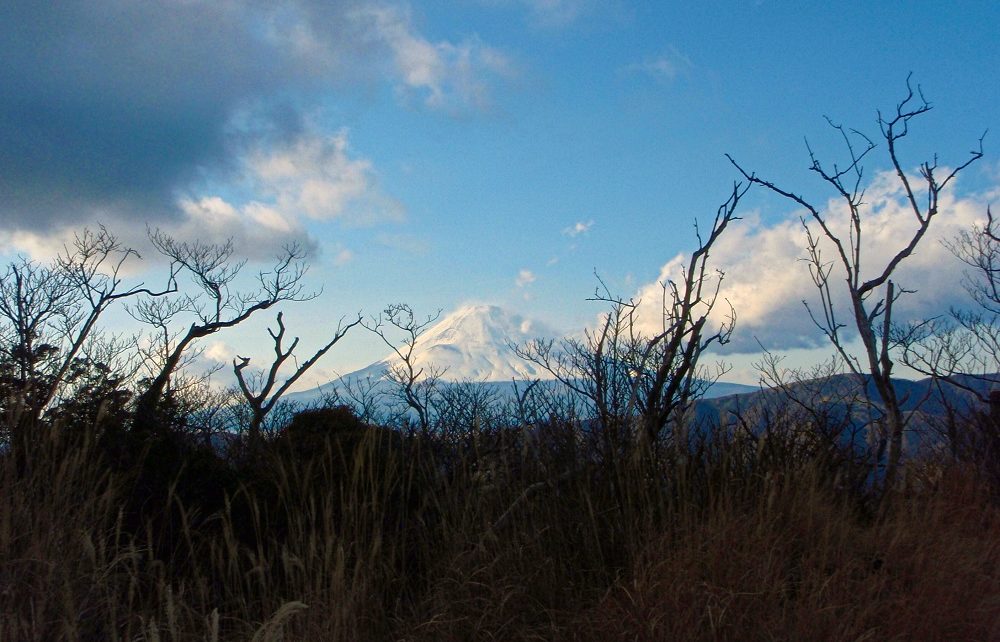With a shaky clunk the cable car passed the pylon at the apex of the ridge. As the next valley came into view, the lush greenery of Hakone gave way to a scorched landscape of steaming vents, stained yellow and white by minerals dredged up from the bowels of the Earth. In the distance, the unmistakable snow-capped peak of Mount Fuji dominated the skyline. It completely dwarfed the other so-called volcanoes that dared to challenge its domain.
The Hakone Circuit
The typical circuit of the Hakone region involves five modes of transport. We traversed a diverse landscape with dense forests, bubbling hot springs and a pristine lake. In true Japanese fashion, our journey was punctuated with local delicacies and the chance to soak in onsen along the way.
Hakone's double caldera is surrounded by a heart-shaped ring of mountains. It is breached only by a canyon carved out by the Haya river. The town of Hakone stretches along the riverbank and is the best way to access this part of the Fuji Hakone National Park.

Steaming Volcanic Vents
In Hakone, we boarded the Hakone 'Tozan' Railway, literally 'mountain climbing' railway, the only one of its kind in Japan. Painfully slowly, the train chugged back and forth, through a series of switchbacks, as it climbed 400m uphill.
Eating Gyoza In Gora
Our destination, Gora village, is one of several hot spring hotspots in the area. It is also the unlikely home of the Gyoza Centre. This small restaurant specialised in only one thing, gyoza, Chinese-style fried dumplings. These thin doughy parcels stuffed with seasoned pork are easy to find throughout Japan. However, the Gyoza Centre's inventive variations on the theme took the dumpling experience to a whole new level.
We dined on gyoza stuffed with natto (fermented soybeans) and our favourite herb, shiso. Though the unexpected highlight of our meal was definitely the deep-fried chicken wings. They didn't look to be anything out of the ordinary until we took our first bite. To our delight, we realised they too were stuffed with pork.
Our Journey To Hell
Our appetites sated, we continued our journey on board the Tozan Cable Car. Despite the name, this was actually a furnicular railway that rumbled further up the mountainside. It led us straight onto the Tozan Ropeway, which ironically, was a cable car. We cruised across a couple of peaks, before descending into Owakudani, the Great Boiling Valley. This jagged landscape bore the battle scars of the landslides and eruptions that forged this region.

A Black Egg
Kurotamago: The Secret To Eternal Life?
Taking a short walk on the well-marked paths, we passed steaming sulphur-encrusted fumaroles and boiling pools of vibrant green. It wasn't long before we found the source of Owakudani's famous black eggs. These regular eggs are hard boiled in the sulphurous spring water that bubbles from the ground. The shells react with the cocktail of minerals and turn completely black. Despite the novel appearance however, the kurotamago tasted just like normal eggs.
It's well known that eating just one of these black eggs will extend your life by 7 years. Munching a whole bag of eggs between us, we wondered if we had in fact discovered the secret to eternal life. We'll have to wait some time before we find out for sure.
Walking To Lake Ashi
Recharged by this hearty snack, we decided to forgo the Tozan Ropeway and instead walk down to Lake Ashi. Well sheltered from the biting wind and with nobody else in sight, we set off down the mountainside. We enjoyed views of Mount Fuji, found some stone Buddhas, and an hour later arrived at the lake.

Mount Fuji
The Pirate Ship To Moto Hakone
Hemmed in on one side by the sheer slopes of the Hakone caldera, Lake Ashi is an important part of the Hakone circuit. Triple-masted galleons, painted in garish red and green and trimmed with gold, cruise the length of the lake. They ferry passengers to the village of Moto Hakone on the opposite shore.
Despite the elaborate exterior, we were disappointed to find our ship was just a regular passenger ferry with uninspiring internal decor. The crew, dressed in full pirate regalia, pestered passengers in the hope of pedalling a souvenir photo or two. They were remarkably successful, though we did manage to resist their rugged charm.
Speaking to Japanese friends, we got the idea that a pirate cruise was an essential part of any visit to Hakone. Despite being a convenient way to cross the lake, we thought it was uncomfortably tacky. On another visit, we walked along the lakeside instead. Following the shaded path through the cedar forest was definitely our preferred option.
Completing The Hakone Circuit
Moto Hakone is another hot spring resort and many of the guesthouses have private onsen baths. After a long day and plenty of walking we were ready for a good dinner and a relaxing soak. The following morning, we took a bus back to Hakone Yumoto to complete the circuit.
Hakone Circuit Travel Tips
This circuit of the Hakone region can be completed in either direction. For those who like to walk, the direction we took meant the hiking was generally downhill.
Hakone's proximity to Tokyo means it is possible to fit this circuit into an action packed day trip. However, we would highly recommend taking a few days to relax and enjoy the experience at leisure.

Owakudani
How To Get To Hakone
Take any train from Tokyo to Odawara.
From Odawara, take a train on the Hakone Tozan line to Hakone Yumoto.
You will need to change trains at Hakone Yumoto. Take a different train on the Hakone Tozan line to get to Gora.
